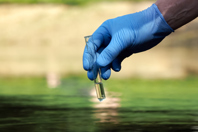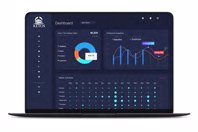DRINKING WATER ANALYSIS RESOURCES
-
An increased emphasis on mitigating the detrimental impacts of water pollution will foster new growth opportunities for the water testing and analysis market over the coming years.
-
Rising Pollution Levels To Offer New Growth Opportunities To The Activated Carbon Fiber Market Share
Rapid industrialization pushed by record population growth and urban migration, in tandem with several other factors such as excessive use of nitrogen-based fertilizers and pesticides, forest fires, residues in agriculture, and improper waste management, has deeply intensified pollution and environmental health risks.
-
When a water quality test came back positive for E. coli, Liberty Lake Sewer and Water District immediately implemented a series of daily flushing and chlorinating efforts with a boil water advisory in effect for 7 days that had people on edge for the upcoming Thanksgiving festivities.
-
New home for water quality lab opens new horizons for innovation, research and teaching.
-
In this article, explore the top reasons you should consider a laboratory zeta potential system for coagulation dose control.
-
The current slope of the U.S. PFAS analytical instrumentation market advancement is steep due to U.S. EPA plans to propose water and wastewater regulations for PFAS. Additionally, some of the key drivers include an increased awareness about the widespread prevalence of PFAS contamination, public outrage, funding, and litigation scares.
-
Water sustainability, conservation, and resiliency have become essential focus areas for many companies. While the US was once a water-rich country, certain areas are seeing what used to be an abundant resource become scarce.
-
The risk level linked to delivered drinking water from municipal utilities is very small, even if some high-profile examples of failure (see Flint, MI) have degraded public confidence to a degree. Our treatment professionals usually hit their targets, so the onus then shifts to the research and guidance that determines the safe level of various constituents through U.S. EPA protocols. But there is one contaminant that rulemaking hasn’t quite caught up to and which is downright deadly — Legionella pneumophila.
-
The following describes how combining of the latest data management and process management solutions can optimize the coagulation process. Coagulation is influenced by several raw water parameters. This new approach uses a feedforward model with machine learning of several raw water parameters for optimal coagulant dosage control. In addition, feed-back control can be used to trim the feed-forward model. In 2020, utilities that have installed the coagulation optimization system have achieved approximately 10% reduction in coagulant dosage while achieving similar settled turbidity.










